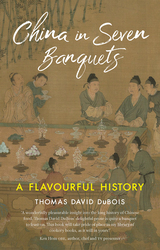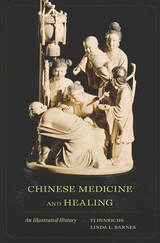
China in Seven Banquets takes readers on a gastronomic adventure into the history of China’s constantly evolving and astonishingly diverse cuisine. From the opulent Eight Treasures feast of ancient times to the Tang dynasty’s legendary “Tail-Burning” banquet, and the extravagant “complete Manchu-Han feast” of the Qing court, these iconic repasts offer glimpses into China’s rich food history. Delving further, the book invites us to partake of lavish banquets immortalized in literature and film, a New Year’s buffet from 1920s Shanghai, a modern delivery menu reflecting the hyperglobal present, and it even offers a peek at the tables of the not-so-distant future. Drawing upon his extensive gastronomic adventures across China, acclaimed historian Thomas David DuBois unravels its ever-changing landscape of culinary trends, revealing why flavors and customs evolved over time. DuBois also recreates dozens of traditional recipes using modern kitchen techniques. Whether indulging in fermented elk or savoring absinthe cocktails, readers embark on an unparalleled odyssey that redefines their perception of Chinese cuisine.

Chinese Medicine and Healing is a comprehensive introduction to a rich array of Chinese healing practices as they have developed through time and across cultures. Contributions from fifty-eight leading international scholars in such fields as Chinese archaeology, history, anthropology, religion, and medicine make this a collaborative work of uncommon intellectual synergy, and a vital new resource for anyone working in East Asian or world history, in medical history and anthropology, and in biomedicine and complementary healing arts.
This illustrated history explores the emergence and development of a wide range of health interventions, including propitiation of disease-inflicting spirits, divination, vitality-cultivating meditative disciplines, herbal remedies, pulse diagnosis, and acupuncture. The authors investigate processes that contribute to historical change, such as competition between different types of practitioner—shamans, Daoist priests, Buddhist monks, scholar physicians, and even government officials. Accompanying vignettes and illustrations bring to life such diverse arenas of health care as childbirth in the Tang period, Yuan state-established medical schools, fertility control in the Qing, and the search for sexual potency in the People’s Republic.
The two final chapters illustrate Chinese healing modalities across the globe and address the challenges they have posed as alternatives to biomedical standards of training and licensure. The discussion includes such far-reaching examples as Chinese treatments for diphtheria in colonial Australia and malaria in Africa, the invention of ear acupuncture by the French and its worldwide dissemination, and the varying applications of acupuncture from Germany to Argentina and Iraq.

From methods of preparing suovabiergu (smoked reindeer meat) in Sápmi, to celebrating graduation by “running the falls” at Uppsala University in Sweden, to massive folk music festivals in Finland and tales of supernatural visitors bestowing baby names in Iceland, folklore offers unique insights into the everyday life of Nordic society. The study of Nordic folklore began in the nineteenth century, when early folklorists imagined that the true character of a nation could be found among the tales of the peasantry. Today, the theories, tools, and institutions developed by influential folklorists in the Nordic region continue to lead the way in documentation, preservation, and analysis of folklore.
READERS
Browse our collection.
PUBLISHERS
See BiblioVault's publisher services.
STUDENT SERVICES
Files for college accessibility offices.
UChicago Accessibility Resources
home | accessibility | search | about | contact us
BiblioVault ® 2001 - 2024
The University of Chicago Press









